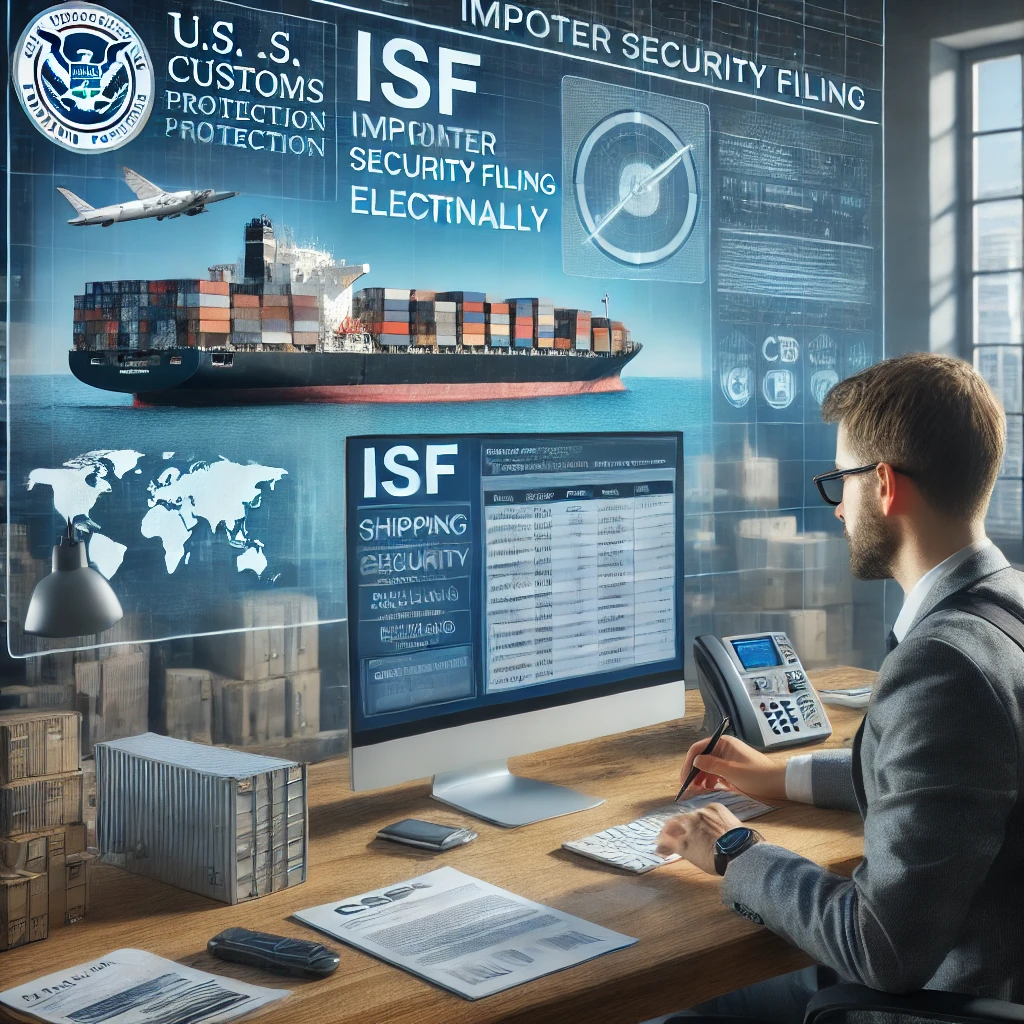Exploring What Is ISF Filing in Detail
In this guide, we’ll cover everything you need to know about ISF filing, including how it works, key requirements, penalties for non-compliance, and best practices for smooth customs clearance. 🚢📑

What Is ISF Filing?
Importer Security Filing (ISF) is a mandatory filing required by U.S. Customs and Border Protection (CBP) for ocean cargo shipments entering the United States.
This regulation, also known as “10+2 Rule,” requires importers to provide specific shipment details at least 24 hours before the cargo is loaded onto a vessel at a foreign port.
📌 Key Purpose of ISF Filing:
✔ Enhance cargo security by providing shipment data before arrival.
✔ Help CBP assess potential risks associated with imported goods.
✔ Ensure faster and smoother customs clearance for compliant shipments.
💡 Example: A company importing electronics from China must submit an ISF filing at least 24 hours before the cargo is loaded onto the departing vessel to avoid delays and penalties.
What Is ISF Filing?
✅ Step 1: Filing Submission
✔ The importer of record or their customs broker must submit the ISF to CBP electronically.
✔ Must be submitted at least 24 hours before the cargo is loaded onto the vessel.
✅ Step 2: CBP Review & Risk Assessment
✔ CBP analyzes the data for potential security risks.
✔ If issues arise, CBP may request additional documentation or inspections.
✅ Step 3: Arrival & Clearance
✔ Upon arrival at a U.S. port, the ISF data is matched with the Bill of Lading (BOL).
✔ Compliant shipments proceed smoothly, while non-compliant shipments face penalties and delays.
💡 Example: If an importer fails to file ISF or submits incorrect data, their container may be held at the port, resulting in demurrage fees and fines.

What Information Is Required for ISF Filing? (10+2 Rule)
The 10+2 Rule refers to the 10 data elements that importers must provide and the 2 data elements that carriers must provide.
📌 10 Data Elements (Provided by the Importer)
- Seller Name & Address – Who is selling the goods?
- Buyer Name & Address – Who is purchasing the goods?
- Importer of Record Number – The U.S. entity responsible for the shipment.
- Consignee Number – The U.S. recipient of the cargo.
- Manufacturer Name & Address – Who is producing the goods?
- Ship-to Party Name & Address – Where will the goods be delivered?
- Container Stuffing Location – Where was the container loaded?
- Consolidator Name & Address – The company responsible for packing the container.
- Commodity HTS Code – The Harmonized Tariff Schedule (HTS) code that classifies the goods.
- Bill of Lading Number – A unique number assigned to the shipment.
📌 2 Data Elements (Provided by the Carrier)
- Vessel Stow Plan – The exact location of the container on the vessel.
- Container Status Messages (CSM) – Updates on the container’s movements and status.
💡 Example: A company importing auto parts must provide all 10 data elements before shipment, while the ocean carrier must submit the 2 additional elements during transport.
Who Is Responsible for Filing ISF?
✔ The importer of record is responsible for filing ISF or working with a licensed customs broker.
✔ The ocean carrier must submit the Vessel Stow Plan & Container Status Messages.
✔ ISF does NOT apply to air, truck, or rail shipments—only ocean cargo.
💡 Example: A retailer importing goods from Europe can assign ISF filing duties to their freight forwarder or customs broker to ensure compliance.

Penalties for ISF Non-Compliance 🚨
Failing to file ISF correctly or on time can result in costly fines and shipment delays.
Violation | Penalty |
Late ISF Filing | Up to $5,000 per violation |
Incorrect or Incomplete Filing | Up to $5,000 per violation |
Failure to File ISF | Up to $10,000 per shipment |
Cargo Holds & Inspections | Additional storage fees, demurrage, and delays |
💡 Example: If an importer submits ISF after the cargo is loaded, CBP may place a hold on the container and impose a $5,000 fine.
Best Practices for ISF Compliance ✅
✅ 1. File ISF on Time
✔ Submit ISF at least 24 hours before vessel departure.
✔ Work with a customs broker to avoid last-minute issues.
✅ 2. Double-Check Data Accuracy
✔ Ensure all 10 data elements are correct before submission.
✔ Use the correct HTS codes to classify goods properly.
✅ 3. Work with Reliable Carriers & Brokers
✔ Choose trusted freight forwarders and customs brokers who understand ISF requirements.
✔ Confirm that carriers provide Vessel Stow Plans & Container Status Messages.
✅ 4. Keep Records for CBP Audits
✔ Maintain ISF records for at least five years.
✔ Have copies of bills of lading, invoices, and shipping documents.
💡 Example: A business importing machinery parts should store all ISF filings and related documents in case of CBP audits or disputes.
How to File ISF: Step-by-Step Guide
Step | Action |
Step 1 | Gather all 10 data elements from suppliers and partners. |
Step 2 | Work with a licensed customs broker or self-file electronically via CBP’s system. |
Step 3 | Submit ISF at least 24 hours before vessel loading. |
Step 4 | Monitor ISF status and ensure the ocean carrier submits the remaining 2 elements. |
Step 5 | Keep records for compliance & audit purposes. |
.
Conclusion
ISF filing is a critical requirement for ocean shipments entering the U.S., ensuring security, compliance, and smooth customs clearance.
✔ Best for: Importers who need to stay compliant with CBP regulations.
✔ Challenges: Strict deadlines and potential fines for errors or late filings.
By understanding ISF filing requirements, working with experienced brokers, and submitting accurate data on time, businesses can avoid penalties and streamline their international shipping operations. 🚢📑
